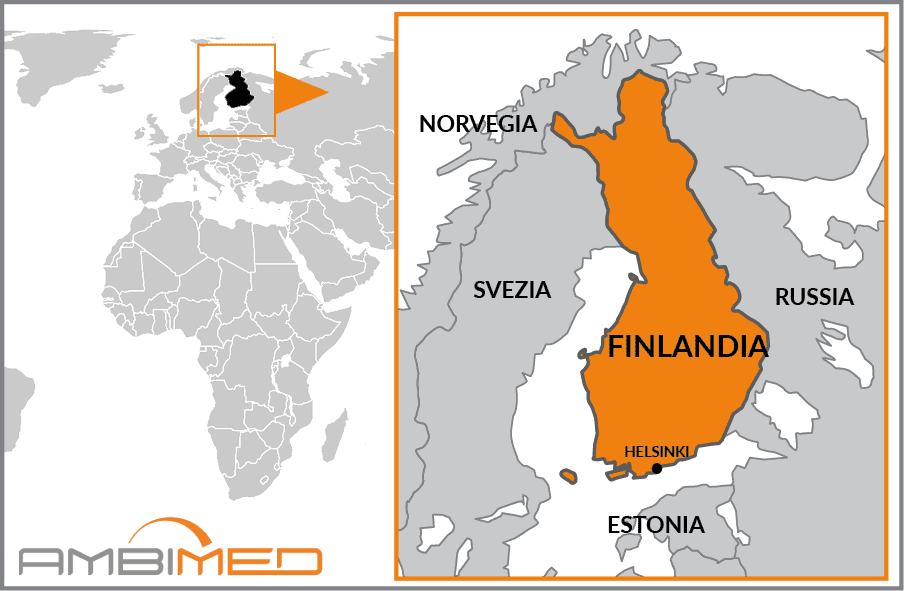Ambimed-Group
Travel Medicine
Business Travel Medicine
Easily manage your reservations and stay constantly updated on Ambimed services.

|
Country Name |
Republic of Finland |
|
Continent |
Europe |
|
Surface area |
338,145 km2 |
|
Capital |
Helsinki |
|
Population |
5,471,753 (2014) |
|
Language |
Finnish and Swedish |
|
Currency |
Euro (EUR) |
|
Time zone |
+1hr compared to Italy |
|
Area code for Italy |
0039 |
|
Area code from Italy |
00358 |
Yellow fever vaccination is not required.
This viral disease is transmitted by the bite of infected ticks. Vaccination is recommended when staying in areas with a higher risk of infection. The risk decreases in the winter months.
Infection typically occurs through contact with the saliva of an infected animal, usually caused by bites, scratches or licks near open wounds or mucous membranes (e.g. mouth, nose, eyes). The most common vectors are dogs and bats, but cases of infection in other domestic animals have also been reported.
Caused by toxins released by the bacterium Clostridium tetani, the risk of tetanus infection is present throughout the country.
Diseases such as West Nile virus are present in Western Europe. As this disease is transmitted by insect bites and there is no vaccine, it is important to adopt careful behavioural and preventive measures.
The following vaccinations are strongly recommended as these diseases can be contracted anywhere in the world. Experts advise that you protect yourself and other travellers by making sure you are up-to-date with all of the recommended vaccinations. This will allow you to travel safely, while minimising the risk of exposure to infection.
One-third of Finland's borders are coastal, with the Gulf of Bothnia to the west and the Gulf of Finland to the south (the northernmost stretch of the Baltic Sea); whereas the country’s land borders neighbour Sweden to west, Norway to the north, and Russia to the east.
The country is extremely rich in lakes (there are more than 55,000) many of which are located in the southern region, which is characterised by mostly flat, with few hills of mountains. Whereas, the north has a more rugged terrain with modest elevations, which ideally connects the Arctic Ocean and the Baltic Sea.
The characteristic feature of the coastline are the numerous small islands (approx. 75,800).
The country has a northern climate; the continental climate is tempered by the Gulf Stream. The temperatures during the different seasons vary considerably, and are accentuated to some extent by the country’s broad latitudinal range. Winter temperatures can start from -10°C in inland areas to -15°C in Lapland, while summer averages are more stable and tend to stay within 15°C.
The wettest months are July and autumn and there is little difference between one area of the country to another.